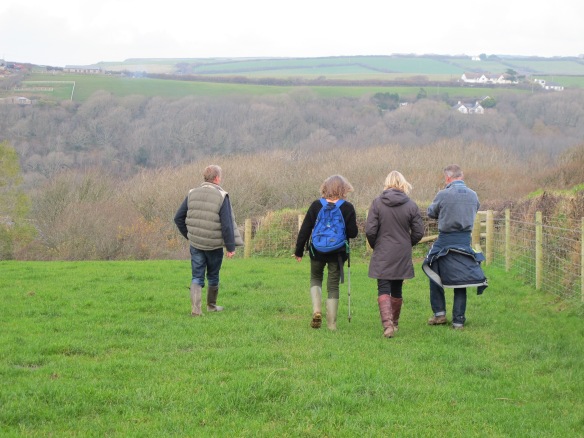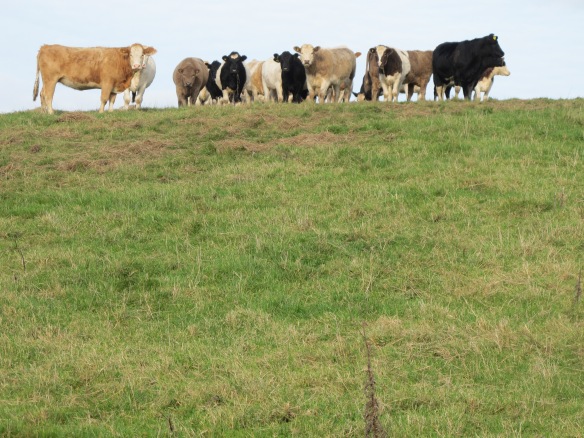On Sunday, I joined the Parish Plod, an event whose aim was to make sure every footpath in the parish was walked in a single day. It’s not a traditional event, but I’m guessing it could turn into one.
We broke into five groups, followed our assigned footpaths, reported back on work they needed, and drank caffeine at one of the beach cafes (and one lucky group stopped at Wooda Farm, a midway point on their route, for homemade cake).
Eventually, as so many things do, it ended at the pub, at least for some of the walkers.
A word about footpaths in the U.K.: Forget your castles, your cathedrals, your stone circles—the footpaths make me feel I can almost touch history here. I’ve followed paths that have been walked not just for centuries but for thousands of years, and they’re still in use. People walked them before running shoes were invented. Before maps. Before metal. Before pubs, even. The people who built the stone circles walked them, and they saw at least some of the same wildflowers. (Land use patterns and imports would have eliminated some and added others, but some would have been the same.)
These footpaths are protected public rights of way, giving walkers the right to cross private land. They take you across fields, through herds of cattle and sheep, through mud that comes up to your ankles and fights for your boots, along the cliffs by the coast, and sometimes through a farmyard or past someone’s front windows. Some landowners hate them, but if you buy a house with a footpath, then you own a house with a footpath. It’s like owning a house next to a road: You don’t get to move the road just because you’re not crazy about the traffic. In 2004, Madonna butted heads with the laws governing footpaths after she bought a modest little mansion whose land included a footpath, and she came away with a bruised forehead when she tried to close it. She did win the right to limit people’s access to parts of her land, but ramblers (as dedicated hikers are called) kept the right to cross it.
Many of the old footpaths have been lost, so the ones left in our parish don’t entirely link up, but the ones that are left are a real asset, loved by both tourists and local residents.
The group I went with got back to the café first (we had the shortest route), declared ourselves the winners, and waited for everyone else to straggle in. I brought the dog down to the stream and washed the mud off her, then we came back equally wet and cold, so at least I hadn’t done anything to her that I hadn’t done to myself.
I’ll be surprised if we don’t do it again next year.


